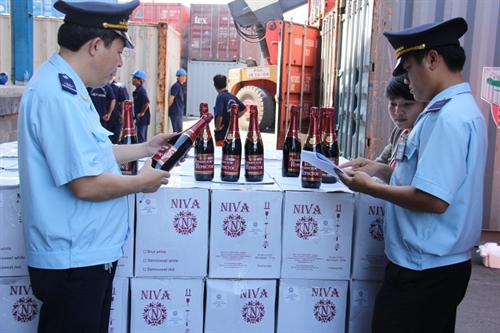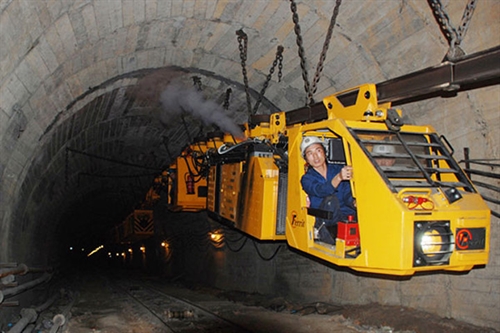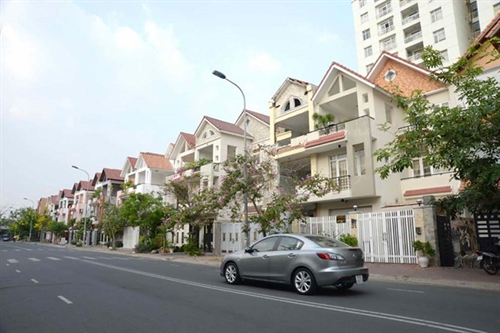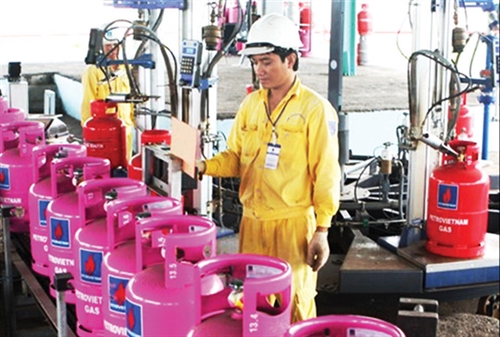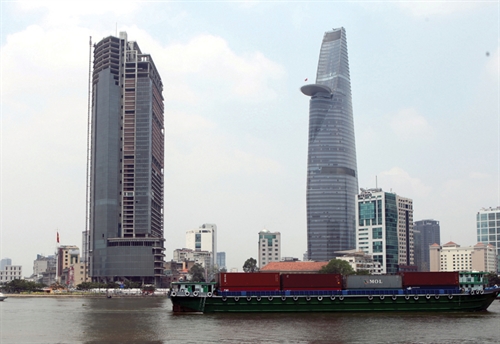Bui Duc Giang
Attorney at law and PhD in law[1]
It is common now in practice to finance projects implemented in industrial parks and/or to take security over real estate located in those industrial parks. However, since the legal framework on lease of land in industrial parks remains complicated and has its limitations, such financing may turn risky for credit institutions in certain circumstances and at certain stages. This article tries to point out some of those risks.
Ways of acquiring land for project implementation
Article 90.3 of Land Law 13/2003/QH11 dated November 26, 2003, as amended in 2009, (the 2003 Land Law) stipulates: “the State allocates land with collection of land use levy or lease land with annual payment of land rental to economic organizations and overseas Vietnamese; lease land with one-off payment of rental for the entire lease term or with annual payment of land rental to overseas Vietnamese and foreign entities and individuals to invest in constructrion and commercial operation of infrastructure facilities in industrial parks”.
Under Article 149.2 of Land Law 45/2013/QH13 dated November 29, 2013 (the 2013 Land Law), “the State leases land to economic organizations, overseas Vietnamese and foreign-invested enterprises to invest in constructrion and commercial operation of infrastructure facilities in industrial parks [...]”.
As per the 2013 Land Law, a company may be allocated land by or rent land from the State in order to construct and exploit an industrial park, and that Law allows only the lease of land for that purpose.
Lease of land in industrial parks
Article 149.2 of the 2013 Land Law stipulates: “with respect to an area of land which is leased with annual rental payment, the person to whom the State leases land has the right to sublease the land with annual rental payment; and with respect to an area of land which is leased with one-off rental payment for the entire lease term, the person to whom the State leases land has the right to sub-lease the land either with one-off rental payment for the entire lease term or with annual rental payment”. However, in case the project owner is allocated land or leased land by the State with one-off land rental payment but is entitled to exemption from land use levy or land rental, it will have the rights and obligations provided by the land law as applicable to the case in which the State leases land with annual rental payment (Article 174.4(c) of the 2013 Land Law ), by that it means that the project owner may only lease or sub-lease out land with annual land rental payment.
The thing is that if renting land from the project owner with annual land rental payment, a company operating in an industrial park will have limited rights compared to a lease with one-off land rental payment for the entire lease term. Indeed, under Article 149.3 of the 2013 Land Law, in this case such lessee is not allowed to assign, make capital contribution with, or create security over, the use rights over the leased land. It may only exercise those rights over its land-attached assets. In practice, this is a huge obstacle when the company is applying for funding from credit institutions.
To circumvent this restriction of the 2013 Land Law, in addition to the annual land rental, almost all project owners are trying to collect also infrastructure use fees which however account for the main part of the aggregate amount payable by the lessee while the annual land rental remains a tiny sum.
This solution appears to be lawful as Article 48 of Decree 118/2015/ND-CP dated November 12, 2015, implementing the Investment Law and Article 21b.2 of Decree 29/2008/ND-CP dated March 14, 2008, on industrial parks, export processing zones and economic zones, as amended in 2013 and 2015, allow project owners to collect both land rental and infrastructure use fees provided that they register rate frames and types of infrastructure use fees with industrial park management boards.
Under Article 210.2 of the 2013 Land Law, if a project owner which had rented land from the State with annual land rental payment sub-leased such land with infrastructure facilities in the form of one-off land rental payment for the entire lease term before July 1, 2014, the sub-lessee would have the same rights and obligations as applicable to the case of land lease by the State with one-off land rental payment for the entire lease term after the project owner has paid in full land rental into the state budget. This means that the sub-lessee may only assign, make capital contribution with, or create security over, the use rights over the land once the project owner has converted the lease with annual land rental payment into a lease with one-off land rental payment for the entire lease term. In practice, almost all project owners refuse to proceed that way for various commercial reasons. Furthermore, neither the 2013 Land Law, nor its implementing texts specifies whether such conversion relates to the entire land area leased by the State or separates land parcels located inside such land area.
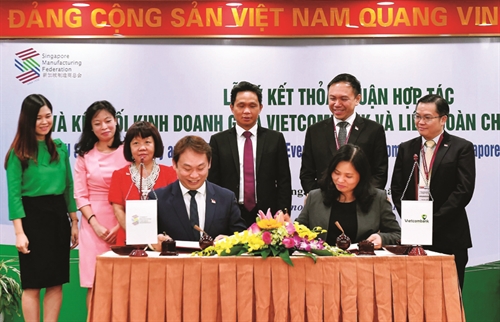 |
| Vietcombank agrees to provide corporate finance and foreign exchange services to Singapore Manufacturing Federation (SMF)__Photo: Tran Viet/VNA |
Charges over land-attached assets
When providing credit by lending money to, or issuing bank guarantees1 at the request of, a company operating in an industrial park which has been renting land from the project owner with annual land rental payment, a credit institution may take security over land-attached assets being future or existing construction works.
Article 3.2 of Joint Circular 09/2016/TTLT-BTP-BTNMT of the Ministry of Justice and Ministry of Natural Resources and Environment, guiding the registration of charges over land use rights and land-attached assets (Circular 09), stipulates: “future land-attached assets include future residential houses, other future construction works which are being in the process of construction investment but not yet accepted for use [...]”. This means that a workshop or facility of a company renting land in an industrial park whose construction has been completed but whose ownership has not been registered will not be considered as a future land-attched asset but an existing land-attached asset and it will be then possible to take security over that asset and proceed to the registration of security in accordance with Articles 21 and 32 of Circular 09. However, these Articles require that the registration dossier to contain inter alia the certificate of land use rights and ownership over residential houses and other land-attached assets (the certificate). This is not always feasible as in practice it may happen that the company has not been issued with a certificate recording its land use rights over the leased land area on which a workshop or facility has been built.
Furthermore, it should be noted that Articles 21 and 32 of Circular 09 allow the registration of charges over land-attached assets which are existing assets but the ownership over which has not yet been registered in the certificate provided that in the charge registration dossier, there must be a written request for certification of ownership over land-attached assets. Then the land registration office will proceed to the certification of ownership over the land-attached assets in the certificate (in case the land-attached asset owner is also the land user that has been issued with a certificate recording the land use rights) or request the competent natural resources and environment authority to issue the certificate (in case the land-attached asset owner is not the land user) before recording the registration of the charge in the certificate. As such, the registration of the charge in this case will not help save much time compared to the case where the charger first applies for the issuance of the certificate and then charges its land-attached asset in favor of the credit institution since this solution is less risky for credit institutions.
In addition, credit institutions may not rest assured that the enforcement of their security is going to be a straightforward process since specific rules on enforcement of security over land-attached assets in industrial parks remain incomplete.
Indeed, the 2013 Land Law sets out a general principle in its Article 175.1(c) under which in case a company which rents land from the State with annual land rental payment, sells its land-attached asset, “the purchaser of the asset shall be entitled to rent land from the State for use for the pre-defined purpose(s)”.
Article 81.3 of Decree 43/2014/ND-CP dated May 15, 2014, detailing a number of articles of the 2013 Land Law, as amended in 2017 (Decree 43) further provides that “in case the land user that rents land with annual land rental payment has created a charge over [...] a land-attached asset fails to perform its obligation towards the chargee [...], the State shall recover the chargor’s land in order to lease it out to the purchaser of the asset or the chargee appropriating the asset in lieu of payment of the secured obligation, unless otherwise agreed”.
Sale of the charged land-attached asset on enforcement is in essence a way in which the company renting land in an industrial park is selling its land-attached assets.
Nevertheless, one of the main characteristics of a lease of land in an industrial park is that the company is renting land from the developer, but not directly from the State. As a result, the above provisions of the 2013 Land Law and Decree 43 would not automatically apply.
One may argue that as the current law sets out the principle of applying analogous rules of law in case of lack of rules of law with respect to a specific matter, it would be possible to revert to the provivisions of the 2013 Land Law and Decree 43 in this case2. Accordingly, the purchaser of the charged asset or the credit institution appropriating the charged asset in lieu of payment of the secured loan will be entitled to remain on lease with the project owner and the parties may keep the intended purpose of the lease as defined in the initial lease between the charger and the project owner or agree on a new one. In other words, those persons will become the new lessees in the lease contract signed with the project owner.
However, this is an important question and the land legislation must provide specific rules and should not give way to application by anology in order to avoid potential disputes.
In practice, cooperation of the project owner is an important condition for a smooth enforcement. For that reason, the credit institution should obtain the project owner’s undertaking to that effect at the very stage of entering into the charge contract.
Risks inherent to project owners
Like all other companies, project owners may be subject to dissolution or bankruptcy and this is likely to affect the lease contracts signed with lessees and thus repayment of the credit granted or security created.
Article 65.1(a) of the 2013 Land Law indicates that the State will take back land in case the user of a land area leased from the State with annual land rental payment is dissolved or goes bankrupt. As such, if a project owner is dissolved or goes bankrupt, in principle the land leased from the State with annual land rental payment will be recovered by the State. Reading this Article together with Article 177 of the 2013 Land Law, it can be inferred that in case the land is leased from the State with one-off land rental payment for the entire lease term, the State will not recover the land in case the project owner is dissolved or goes bankrupt: the land use rights belong to the project owner and will be realized in accordance with the legislation on dissolution or bankruptcy.
In this regard, attention should be paid to the characteristics of land lease in industrial parks, in particular to the fact that lessees are issued with certificates for the leased land (Article 99.1(e) of the 2013 Land Law), regarless of whether the land is leased from the project owner with annual or one-off land rental payment.
It is noteworthy that the 2013 Land Law is silent on the fate of land lessees in industrial parks in case the State takes back the land leased with one-off land rental payment because the project owner is dissolved or goes bankrupt. It would be legitimate that in such a case lessees would be entitled to remain on lease with the State in order to be able to continue its business activities.
The above analysis shows that there remain certain loopholes and limitations in the legal framework applicable to land leases and security over real estate in industrial parks. In practice, this has created various troubles to credit institutions notably in the process of creation and enforcement of their security. Hopefully, a clearer framework will be enacted in the coming time to help boost credit.-

